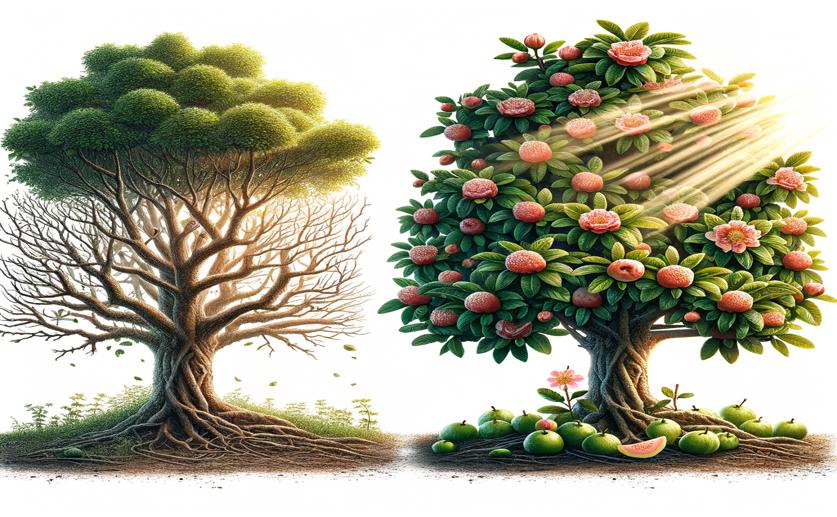
Pruning Methods Influence Guava Flowering, Yield, and Fruit Quality
Jim Crocker
8th May, 2024

Image Source: Natural Science News, 2024
Key Findings
- Study in tropics shows pruning guava trees in autumn enhances dry season fruit quality
- Pruning 30 cm from shoot-tip yields most flowers and fruits, boosting overall harvest
- Spring and autumn pruning both increase annual guava yields, with seasonal benefits
AgricultureBiochemPlant Science
References
Main Study
1) Pruning techniques affect flowering, fruiting, yield and fruit biochemical traits in guava under transitory sub-tropical conditions.
Published 15th May, 2024 (future Journal edition)
https://doi.org/10.1016/j.heliyon.2024.e30064
Related Studies
2) Summer pruning of sweet cherry: a way to control sugar content in different organs.
3) Reaching Natural Growth: The Significance of Light and Temperature Fluctuations in Plant Performance in Indoor Growth Facilities.
4) Inflorescence temperature influences fruit set, phenology, and sink strength of Cabernet Sauvignon grape berries.



 25th April, 2024 | Jenn Hoskins
25th April, 2024 | Jenn Hoskins